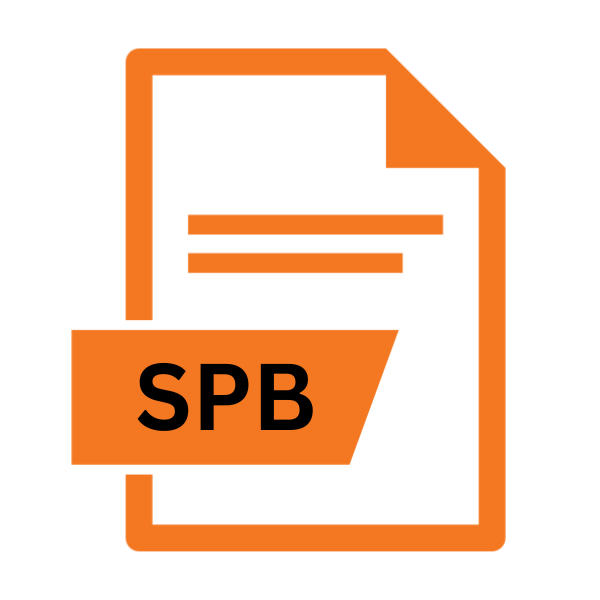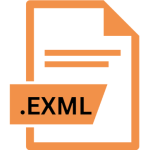.SPB File Extension

Flight Simulator Mission File
| Developer | Microsoft |
| Popularity | |
| Category | Game Files |
| Format | .SPB |
| Cross Platform | Update Soon |
What is an SPB file?
The .SPB file extension primarily signifies Flight Simulator Mission Files utilized by various flight simulation software.
These files contain essential mission data, including waypoints, objectives, environmental conditions, and aircraft configurations, crucial for the immersive flight simulation experience.
More Information.
Microsoft Flight Simulator, with its robust mission editor, pioneered the utilization of .SPB files. These files enabled users to create, share, and experience custom flight scenarios, ranging from search and rescue missions to challenging aerobatic maneuvers.
The primary purpose was to extend the replayability and diversity of flight simulation experiences beyond standard free flight modes.
Origin Of This File.
The genesis of .SPB files can be traced back to the evolution of flight simulation software, where developers sought to enhance user engagement by introducing dynamic missions.
Initially popularized by the Microsoft Flight Simulator series and later adopted by other flight simulation platforms, .SPB files became synonymous with structured mission scenarios.
File Structure Technical Specification.
.SPB files adhere to a structured format designed to encapsulate mission parameters comprehensively. They typically comprise XML (eXtensible Markup Language) or proprietary binary formats.
The structure includes sections for mission objectives, aircraft specifications, weather conditions, geographical waypoints, and event triggers, allowing for intricate mission design and execution.
How to Convert the File?
Converting .SPB files may be necessary to ensure compatibility across various flight simulation platforms or to facilitate editing by utilizing different tools.
While proprietary tools may exist for specific conversions, manual conversion methods can also be employed. Here’s a general guide on how to convert .SPB files:
Manual Conversion Steps:
- Identify the File Format: Determine the structure and format of the .SPB file. It may be in XML (eXtensible Markup Language) or a proprietary binary format.
- Extract Mission Data: If the .SPB file is in a binary format, consider using specialized extraction tools or reverse-engineering techniques to extract mission data.
- Convert to Standard Formats: Convert the extracted data to standard formats like XML or CSV (Comma-Separated Values). This step may involve restructuring the data to fit the target format’s schema.
- Utilize Conversion Tools: Explore software tools or scripts designed for converting .SPB files to other formats. These tools may automate the conversion process and handle complex data structures more efficiently.
- Review and Validate: After conversion, review the converted data to ensure accuracy and completeness. Validate the converted file against the original .SPB file to verify that all mission parameters and data have been preserved.
- Edit or Enhance: Depending on the purpose of conversion, you may need to edit or enhance the converted file using compatible editing software. This step allows for customization or refinement of mission parameters before use.
- Test Compatibility: Test the converted file with the intended flight simulation software or tools to ensure compatibility and functionality. Make any necessary adjustments based on testing results.
- Save and Distribute: Once satisfied with the converted file, save it in the desired format and distribute it as needed. Ensure that recipients are aware of the converted format to avoid compatibility issues.
Conversion Tools and Resources:
- SPB Conversion Software: Look for specialized software designed for converting .SPB files to other formats. These tools may offer additional features such as batch conversion and format customization.
- XML Editors: XML editors can be useful for converting .SPB files to XML format or for editing XML data directly. They provide tools for viewing, editing, and validating XML documents.
- Scripting Languages: Scripting languages like Python or PowerShell can be employed for custom conversion tasks. Utilize libraries or modules for XML parsing and data manipulation to automate the conversion process.
- Online Converters: Online file conversion services may support conversion from .SPB to commonly used formats. However, exercise caution when using online converters, especially with sensitive or proprietary data.
Advantages And Disadvantages.
The utilization of .SPB files offer several advantages to flight simulation enthusiasts. They enable the creation of diverse and engaging missions, fostering community engagement and content sharing.
.SPB files allow precise control over mission parameters, facilitating immersive and challenging experiences.
Their proprietary nature can sometimes limit interoperability between different flight simulation platforms, posing a challenge for users seeking cross-compatibility.
How to Open SPB?
Open In Windows
- Method 1: Double-click the .SPB file, and if you have compatible flight simulation software installed, such as Microsoft Flight Simulator or X-Plane, it should automatically open within the application.
- Method 2: If the .SPB file doesn’t open automatically, you can launch your preferred flight simulation software and use the “Open” or “Load Mission” option from the menu to navigate to the location of the .SPB file and open it manually.
Open In Linux
- Method 1: Linux users can use Wine, a compatibility layer, to run Windows-based flight simulation software capable of opening .SPB files. Install Wine and then run the flight simulation software through Wine to open the .SPB file.
- Method 2: Alternatively, look for open-source flight simulation software compatible with .SPB files that have native support for Linux distributions. These applications can be installed using package managers like apt or yum.
Open In MAC
- Method 1: Mac users can use virtualization software like Parallels Desktop or Boot Camp to run Windows-based flight simulation software that supports .SPB files. Install the desired flight simulation software on the virtualized Windows environment and open the .SPB file from there.
- Method 2: Look for macOS-compatible flight simulation software with native support for .SPB files. Check the App Store or third-party software repositories for such applications.
Open In Android
- Method 1: Android users can explore flight simulation apps available on the Google Play Store. Look for apps that support .SPB files or provide mission editing capabilities. Install the app, and then use the file manager within the app to open the .SPB file.
- Method 2: Consider using emulation software like ExaGear Strategies, which allows running some Windows applications on Android devices. Install compatible flight simulation software through the emulation environment and open the .SPB file from there.
Open In IOS
- Method 1: iOS users can search the App Store for flight simulation apps that support .SPB files or offer mission editing functionality. Install the app, and then use the file management features within the app to open the .SPB file.
- Method 2: Due to the more restricted nature of iOS, options for opening .SPB files directly may be limited. However, users can explore remote desktop applications to access Windows-based flight simulation software running on a remote PC or server.
Open in Others
- Method 1: For other platforms or niche operating systems, consider using cross-platform flight simulation software that supports .SPB files. Look for software with broad compatibility or community-developed solutions tailored to specific platforms.
- Method 2: If compatible flight simulation software is not available for your platform, explore virtualization or emulation options to run supported software within a compatible environment. This may require additional setup and configuration but can provide access to .SPB files on diverse platforms.













